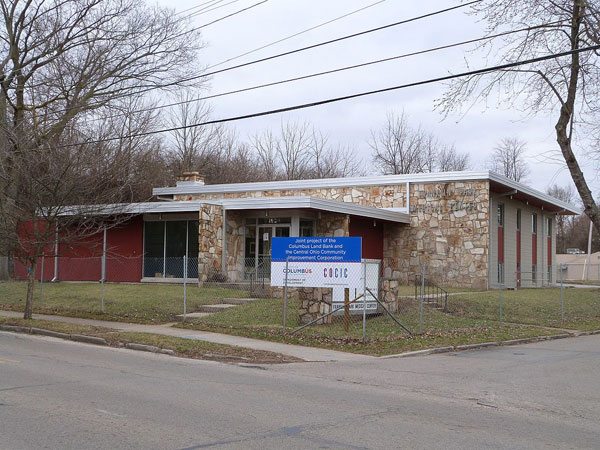
April 1, 2018; Columbus Dispatch
As NPQ noted last fall, today, “land banks are part of the landscape of city government.” But only a decade ago, the US had fewer than a dozen. A study released last month about two land banks in central Ohio, authored by John Collier and Alison Goebel of the Greater Ohio Policy Center, helps illustrate why land banks have proved so important in community development.
As the Center for Community Progress, a national nonprofit and advocacy group, explains, land banks serve as “a direct response to [the nation’s] growing trend of vacancy and abandonment, created to strategically acquire problem properties and convert these liabilities into assets.” Land banks, the group adds, by acquiring title to “problem properties, eliminate the liabilities, and transfer the properties to new, responsible owners in a transparent manner that results in outcomes consistent with community-based plans.”
In Ohio, the city of Columbus land bank has been around for a while. But in partnership with the Franklin County land bank, which was formed in 2012 and operated by the Central Ohio Community Improvement Corporation—and, crucially, armed with state legislation giving land banks new powers—land banks have helped reduce the city’s number of vacant and abandoned properties by 40 percent in five years, while generating $180 million in economic value.
The county land bank’s budget was $13.5 million in 2017, writes Mark Ferenchik in the Columbus Dispatch. Revenue to fund operations, Ferenchik explains, comes 49 percent from delinquent tax collections and other city sources and the remaining 51 percent comes from state sources.
“The land banks have acquired most of their properties through expedited and regular tax foreclosures,” Ferenchik explains. “Expedited tax foreclosures are when the county treasurer initiates an accelerated process to acquire abandoned properties, but that still may take six to 12 months. A regular foreclosure over unpaid real estate taxes may take up to 20 months.”
In Ohio, the first land bank formed in 1976, but the powers of land bank authorities were limited until the 2010 Land Reutilization Program (ORC 5722.01) law passed in 2010. Under that law, county land banks were authorized “to take title to problem properties; clear titles of outstanding liens, fees and fines; intercede in sheriff sale proceedings; hold land; and advance economic and housing development through the transfer or sale of land.”
Since the Franklin County land bank came online in 2012, the impact has been significant. Among the report findings:
-
$90 million in protected home values from demolishing nearby homes
-
$80 million in private and nonprofit investment on vacant lots or redeveloping blighted and abandoned homes
Sign up for our free newsletters
Subscribe to NPQ's newsletters to have our top stories delivered directly to your inbox.
By signing up, you agree to our privacy policy and terms of use, and to receive messages from NPQ and our partners.
-
$7.8 million in land sales
-
$3.3 million in grants and loans to nonprofit partners
-
$442,000 in property taxes from former land-bank properties in 2017
Alison Goebel, executive director of Greater Ohio and a report co-author, expressed surprise at the findings: “We knew they were having impact. We didn’t know the magnitude.” The study was conducted at the request of the city and county land banks, which asked Greater Ohio to review the land banks’ activities from 2012 through 2017.
“We wanted to understand from a policy standpoint what we’re getting for our investments,” said Steve Schoeny, Columbus’s development director. “We were pleasantly surprised by what they found.”
Goebel said that community leaders and residents that were interviewed felt more hopeful about their neighborhoods because of the land banks’ work. “It validates it’s working, not just stabilizing but improving communities,” she said.
“Most of the land banks’ work has been demolitions,” Ferenchik writes, “more than 1,600 since 2012. Columbus had 3,817 vacant and abandoned properties at the end of 2017, down from 6,284 in 2012.”
Still, report authors Collier and Goebel were careful to point out that demolition is only the beginning, not the end of the process. “To achieve their mission of revitalizing neighborhoods, the Land Banks operate several programs that rehabilitate properties, put vacant land back into productive use, and reverse the downward trajectory of a neighborhood,” Collier and Goebel explain. For example, the “Trusted Partner Program awards grants to a small list of local, experienced non-profit housing partners to complete new build projects as well as rehabilitation of abandoned homes county-wide.” As of mid-2017, the county land bank had advanced $2,405,742 to the Trusted Partner program to nonprofits to rehab 47 existing structures and construct 34 new units. An average rehab project costs $30,000. The land bank also works with cooperating landlords, advancing loans for rehabilitation and repair.
All told, to date the land bank has placed “placed 1,299 properties with new, responsible end users.” The land bank also generates some of its income through assembling land and then reselling the improved properties. “Between 2012 and 2017, the Land Banks generated $7.8 million in revenue from direct land sales,” Collier and Goebel indicate.—Steve Dubb











